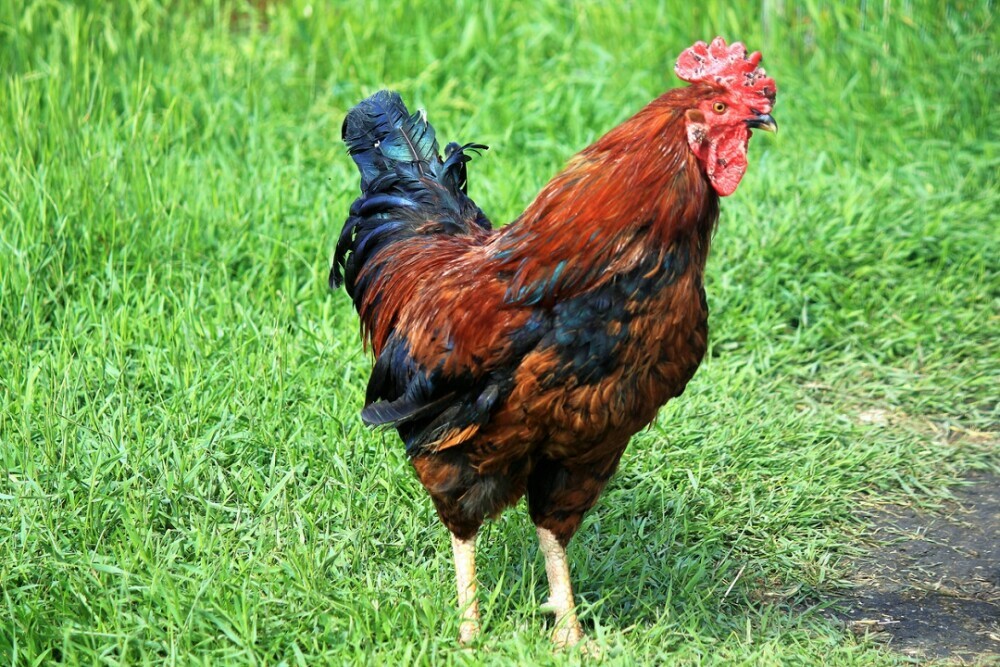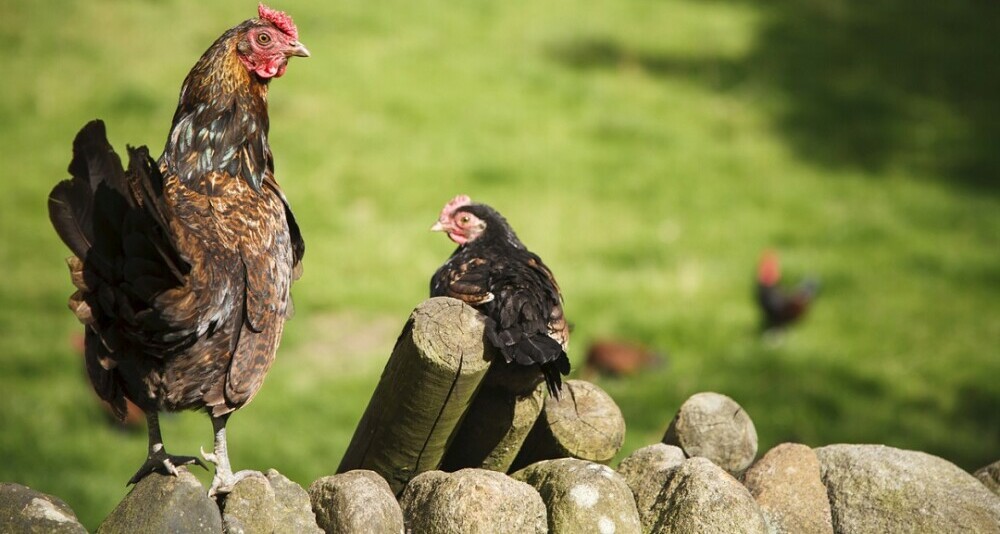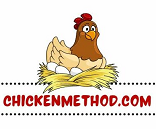 Photo by Shawn Flair
Photo by Shawn Flair
If you’re interested in heritage chicken breeds, the Redcap chicken is a fascinating one to learn about. Its unique appearance, with a large rose comb tipped with red—earning it the ‘Redcap’ name—makes it stand out in any flock. These birds are hardy and adaptable, qualities that have sustained them since their origins in the rolling hills of England.
Redcap chickens don’t just have a distinct look. They’re celebrated for their foraging abilities and are known as a robust, resourceful breed.
For those leaning towards self-sufficient farming or looking for a chicken that thrives with minimal fuss, this breed might tick all your boxes.
One of the remarkable attributes of the Redcap is its versatility. It’s not pigeonholed into just being a layer or a meat breed but has the capacity to fill both roles to a certain extent.
This makes the Redcap an attractive option for small farm operations or backyard poultry enthusiasts who appreciate dual-purpose breeds.
You might expect a breed with such a unique comb to be just for show, but that’s not the case.
Although they do make a delightful show bird, Redcaps are more than ornamental. They’re reliable layers, and their temperament is conducive to a peaceful coop environment, making them an excellent addition to various farm settings.
Let’s learn about the Redcap chicken’s history, which is quite interesting. The origins of the Redcap chicken tell us about the breed and the human cultures and farming practices from which they emerged.
Before we move on, I want you to know that this article is a continuation of my chicken breeds list that includes all of the breeds recognized by the APA.
Tracing the Roots of Redcap Chickens

We’re going back in time a few hundred years to the countryside of Derbyshire, England. It’s here, amid rolling hills and quaint farms, where the Redcap chicken first clucked its way into history. This breed has roots stretching back several centuries, cementing its status as a heritage breed with a storied past.
This is when the Redcap evolved into a breed known for its hardy nature and striking appearance. Traditionally, Redcaps have been prized for their significant role on British farms.
I’m here to help you understand that heritage because knowing where Redcap chickens come from can give you valuable insights into their current characteristics.
By the 19th Century, they were widely recognized for their distinct large combs and were commonly found strutting around in the Derbyshire region.
If you want to appreciate these chickens thoroughly, don’t worry too much about memorizing dates and names. Focus instead on how this breed’s rich history in the English countryside has influenced its resilience and utility.
The Redcap as a Layer, Meat Bird, or Both
You might be wondering how the Redcap chicken fares when it comes to its role on your farm or backyard. Is it better suited for producing eggs, providing meat, or perhaps both?
Guess what? The Redcap is actually considered a dual-purpose breed, offering the best of both worlds for those looking for versatility in their flock.
Now, let’s talk eggs. Redcap chickens are reputable layers known for their consistent production of medium to large eggs.
Though they may not be the champion egg-layers like some other breeds, they hold their own with a decent annual yield.
But that’s not all; the eggs of a Redcap come with a unique, white to slightly tinted shell, adding a touch of diversity to your egg basket.
When it comes to meat production, the Redcap might not be your first choice if you’re looking for a hefty meat bird. These chickens are typically leaner with less breast meat compared to specifically bred meat chickens. However, don’t dismiss them entirely; they can indeed provide a satisfactory meat yield, especially for those who appreciate traditional, less commercial tastes and textures.
Redcap chicks are full of life and hatch yellow with a dark stripe on their backs. There is also a touch of black on the top of their heads. Incubating a hatch for these chickens sounds like fun to me.
I’m here to help you understand these birds’ practical value. Redcaps strike a balance, providing a sustainable poultry option that can grace your table with eggs and meat. In a world where maximizing farm space and value is crucial, these birds could be exactly what you need.
The Redcap Chicken’s Physicality and Production
When you’re considering adding Redcap chickens to your flock, it’s not just about their striking looks; their physicality and egg production are just as important.
Redcap roosters typically tip the scales at a respectable 7.5 to 9 pounds, while hens are a bit lighter, usually weighing between 6 and 7.5 pounds. Size matters in poultry for various reasons, including meat production and, for many, garden pest control.
Now, let’s talk eggs–a crucial part of any chicken breed’s resume. Redcap hens aren’t slackers in the egg-laying department; you can expect them to lay a commendable 150-200 eggs per year.
Of course, the environment plays a role in how your chickens fare. Luckily, Redcaps are quite the survivors.
They’re cold-hardy birds, meaning they can strut their stuff despite the chill. But don’t start thinking they’re only suited for colder climates; these birds are just as adept at handling the heat. That resilience makes them versatile to various homesteading locations.
Mood-wise, Redcap chickens have a reputation for being active and alert. While they are not the cuddly types to seek out laps, they can integrate well into a mixed flock. This temperament is an asset, especially when considering the dynamic of your current coop inhabitants.
All these traits naturally segue into their lifestyle activities, particularly how they interact with their environment. And that’s exactly what we’re going to dive into next–their foraging habits, health robustness, and the special attention they might need to thrive.
That’s The Redcap Chicken Breed

You’ve now learned a bit about Redcap chickens, gaining insight into their origin, versatility, and hardiness. I’m sure you’ll agree that this breed stands out for its distinctive appearance and its benefits to chicken owners.
Remember, the Redcap chicken isn’t just a pretty face with fascinating origins. It’s a functional breed with substantial meat and egg-laying capacities.
We’ve seen that their moderate size and colorful eggs can make them a standout addition to any flock, and their hardiness in various climates makes them a reliable choice.
Their temperament, characterized by alertness and an independent streak, coupled with their foraging prowess, renders them an excellent option for free-range setups.
While they aren’t the cuddliest of chickens, they do bring an efficient and resourceful dynamic to the yard.
Health-wise, Redcaps are resilient, but like all creatures, they thrive best with preventive care and a watchful eye for possible issues. Engaging with a community of fellow Redcap keepers can help in staying ahead of any breed-specific challenges.
If you are interested in heritage breeds, functionality, and a bit of character, the Redcap chicken might be your perfect match.
As you continue raising chickens, consider whether these birds align with what you want from your flock, and if they fit the environment, you can provide.
Whichever path you choose, here’s hoping your experiences with poultry are as enriching and enjoyable as the striking Redcap itself.
Thanks a lot for reading. Take good care of yourself.
Dave
Chickenmethod.com
